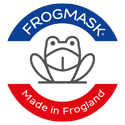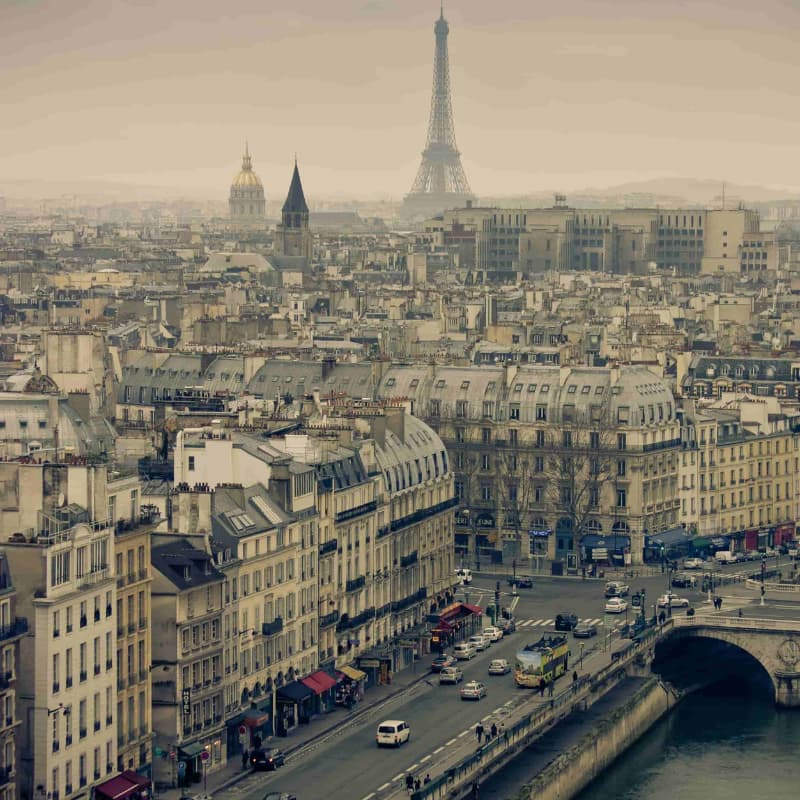According to the latest Airparif agency report on air quality in the Paris and suburbs area in 2023, the overall air quality situation is improving. But this report remains far from satisfactory for the health of Ile de France residents. Nearly 8 million Ile de France residents breathe air whose concentrations do not currently comply with the draft limit value proposed for 2030 by the World Health Organization. All of them remain exposed to air that does not comply with the WHO's annual and daily recommendations.
Figures on the impact of ambient air pollution on the French population (according to Public Health France) are chilling, with 40,000 deaths attributable each year to fine particles (PM2.5) and 7,000 deaths attributable to nitrogen dioxide (NO 2) .
Cyclists ride in the middle of traffic, where air pollution is most concentrated in nitrogen dioxide and fine particles. Yet many of them still ask themselves the question “Should you wear a cycling mask in Paris?”
Air quality, encouraging but not satisfactory results
Despite a notable general improvement, levels of air pollutants still significantly exceed the thresholds recommended by the WHO across the entire Île-de-France region. In 2022, the 12 million inhabitants were exposed to air whose concentrations of fine particles and ozone exceed the thresholds recommended by the WHO.
The figure drops to 11.5 million for nitrogen dioxide. As a result, the regional health observatory of Ile de France estimates that 7,900 premature deaths could be avoided if pollutant concentrations fell below the levels recommended by the WHO.

Many users are still doubtful about the benefits of the cycling mask
Cyclists remain divided on the benefits of wearing an anti-pollution mask. It must be said that many still do not wear a helmet since it is not mandatory. However, it is an essential safety element. There are many testimonies from cyclists whose lives were saved by their helmet.
When an organization like ANSES declares that the anti-pollution mask is not effective and that this is relayed by most of the media, it doesn't help! Indeed, a cycling mask is not the miracle cure because it will never filter 100% of pollutants. It still allows you to avoid inhaling the largest particles including PM 10 and PM 2.5 those which are followed by the measuring institutes.
The benefits of a cycling mask
If they meet the FFP1, FFP2 or FFP3 filtration standards, these masks will filter 80, 94 or 99% of fine particles down to 0.4µm. That's not so bad, right? It seems that it's better to breathe everything!
In addition to protecting against a good portion of airborne particles, a cycling mask protects against pollen, rain and cold in winter.
The Frogmask cycling mask was created for urban travel
I created the mask brand Frogmask in 2020 to offer a high-quality French product to the many bike commuters who are keen to protect their respiratory tracts on their commute to work. What's the point of buying Chinese masks when you can make them in France?
Made of 3D Mesh, a Frogmask weighs less than 50g. It is adjustable thanks to a velcro-type strap at the nape of the neck, which therefore does not interfere with wearing a helmet.
The mask itself does not filter anything, it is a support for the FFP2 filter which has real filtering power. The filter is changed every 2 to 3 weeks depending on the intensity of use and the level of pollution. Generally, filters get dirty more quickly than they are full.
A double flexible aluminum rod (one in the mask structure and one on the filter) prevents the expelled hot air from rising up the nose. This greatly limits the formation of fog in glasses wearers.
The brand offers 3 sizes in order to provide each individual with a mask adapted to their morphology. The effectiveness of a cycling mask depends strongly on its hermeticity with the skin. If the air inspired passes through the sides, it is not filtered and the mask is useless. This is why it is recommended to avoid buying masks in one size. They are less effective.
Handmade in the suburbs of Lyon, they are guaranteed for one year and delivery is free for a price below 40 euros including tax.

It is important to continue promoting measures to improve air quality and reduce pollution. The European Commission has proposed lowering the thresholds for regulatory limit values for air pollution, thus moving closer to WHO recommendations. This proposal aims to reduce concentrations of fine particles and nitrogen dioxide. This could have a significant impact on public health. It is essential to support these initiatives and raise awareness of the adverse effects of air pollution on human health.
In conclusion, although improvements have been observed in air quality in 2022, there are still challenges to address in reducing air pollution levels. Anti-pollution masks for cyclists can help mitigate the effects of pollution, but broader measures and strict regulations are needed to improve air quality for all.
Here is the link to the full Airparif report.




